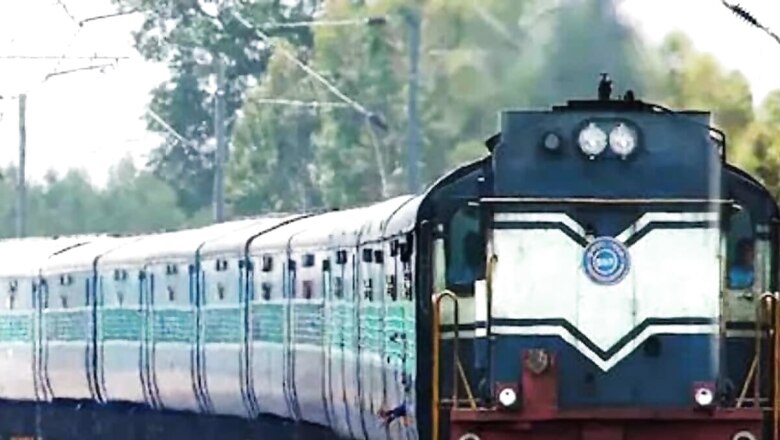
views
When India attained Independence in 1947, the country had numerous challenges and lack of basic infrastructure was one of them. With about 4 lakh km of road network, including 21,378 km of national highways and 25,170 route km of Broad Gauge (BG) rail network in 1947, the country had to travel miles to get where it is today.
As India celebrates its 77th Independence Day today, it has a massive road network of around 64 lakh km, which is the second largest in the world. This includes the national highways at 1.45 lakh km and the BG rail network, which is now 65,300 rKMs, including electrified 58,812 rKm.
The journey may have been fast or slow but was steady. It is the result of consistent efforts, the nation managed to come this far.
Indian Railways
India got its first train in 1853 between Bombay and Thane. It covered a distance of 34 km with 14 coaches and 400 passengers.
After Independence, the Indian Railways was formed by the merger of 42 units owned by different princely states. In the following years, the Railways was divided into six zones for better administration. Today, there are 19 railway zones.
Railways started making its products indigenous. After 1985, steam locomotives were phased out as it was an era of electric and diesel locomotives.
During pre-Independence, electrification of only 388 route km was taken up.
At the time of independence, Bombay and Madras had electrified routes. Post-Independence, electrification of the Howrah-Burdwan section was carried out. It was 3000 V DC.
Meanwhile, India also started making electric locomotives at Chittaranjan Loco-motive Works in the 1960s.
Around the same time, with the help of the French National Railways, India started adopting an electric traction 25 kV AC system to keep in line with international standards.
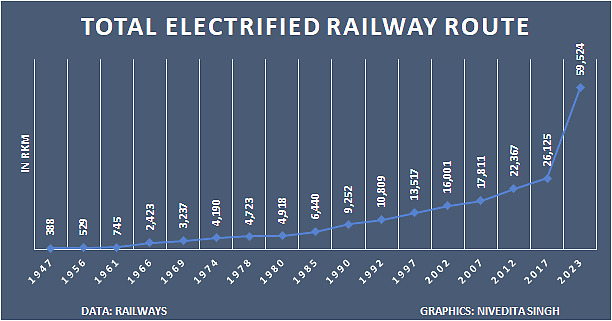
Amidst all these developments, India also laid new lines and started Gauge conversion from Meter Gauge (MG) and Narrow Gauge (NG) to Broad Gauge (BG).
From just 25,170 km of BG in 1947, India now has 65,300 km of BG as of July end. The entire BG network is likely to be electrified by the end of this financial year.
Roads
While railways are crucial for a country to offer affordable commutes for long distance, it is the road network that offers last mile connectivity.
Further, with the economic growth, the capacity of highways for handling both passenger and goods traffic needs to improve.
It was not overnight that India achieved the milestone of having the world’s second largest road network.
In 1947, the country had just about 4 lakh km of roads, which jumped to more than 23.27 lakh km road length by 1991. At present, India has more than 63 lakh km of road, as of latest data from 2019.

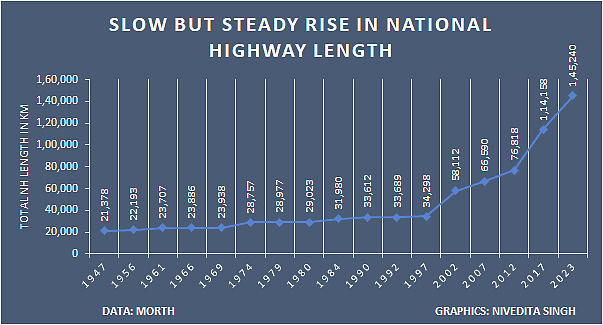
The highest share of these is rural roads – at about 45.35 lakh km. Next in line is the district roads at a little of 6.32 lakh km.
National Highways play a very crucial role in not just connecting the country but also offer better opportunities for the common man. Currently, India has 1.45 lakh km of national highway network, up from 21,378 in 1947.
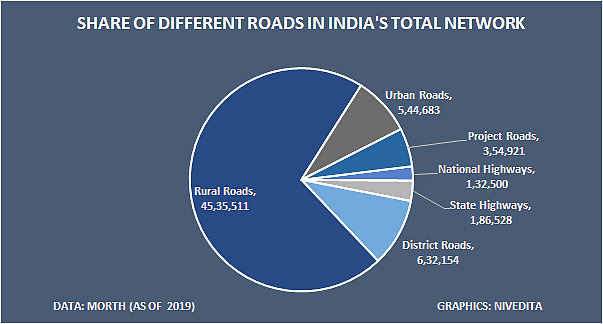

It is not that only the national highway length has increased. The rural roads in India stood at just 2.06 lakh km in 1947 that increased to 45.35 lakh km as of 2019, the latest figures available.
India is not just world’s second most populous country but is also home to one of the youngest populations globally. With these many young people around, India has miles to go.















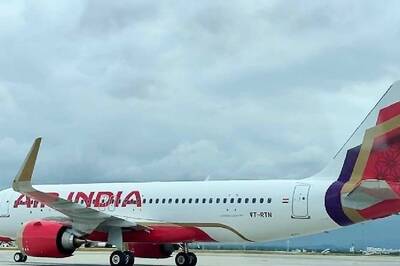



Comments
0 comment